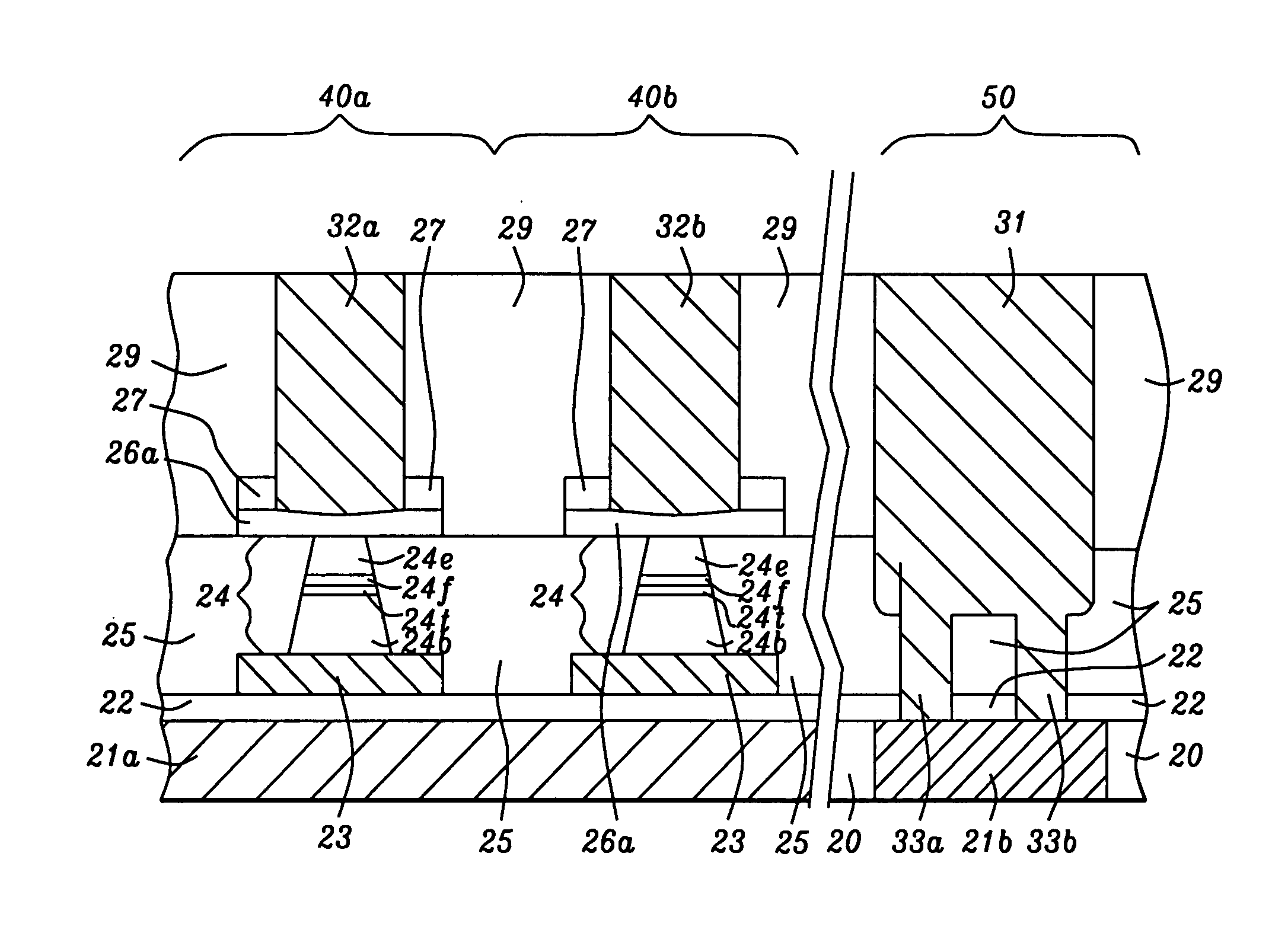Novel bit line preparation method in MRAM fabrication
a technology of mram and line preparation, applied in the direction of basic electric elements, electrical apparatus, semiconductor devices, etc., can solve the problems of deterioration of magnetic performance, difficult control of the amount, and degradation of mtj performance, so as to improve the process window and reduce the mcb topography of the third embodiment.
- Summary
- Abstract
- Description
- Claims
- Application Information
AI Technical Summary
Benefits of technology
Problems solved by technology
Method used
Image
Examples
first embodiment
[0048] in FIG. 5, a wet cleaning process is performed to remove residues produced during the aforementioned metal plasma etch process. Since it is important to remove all metal residues to ensure that neighboring MCBs 26a are electrically isolated, the wet clean process may be applied for an extended period of time. Typically, due to the over etch and wet cleaning conditions, there is some erosion or etching of the top surface 25s of MTJ ILD layer 25 to form a new top surface 25t that is a distance d below the top surface of MCBs 26a. For a thin MCB 26a that is less than 100 Angstroms thick and with a certain amount of over etch and wet clean processing that causes less than 50 Angstroms loss of oxide (MTJ ILD 25), d which is also referred to as MCB depth or step height is typically less than 150 Angstroms and the resulting topography should not be severe enough to cause patterning issues for later process steps. With a MCB layer that is greater than 200 Angstroms thick and over etc...
fourth embodiment
[0059]the present invention represents a modification of the third embodiment. Referring to FIG. 8, a dielectric layer 27, preferably silicon nitride, is formed on the MCB layer 26 prior to fabricating a plurality of MCBs 26a. In this case, a thin silicon nitride layer preferably less than 100 Angstroms thick is used to reduce the step height after MCB patterning to less than d2 (not shown). Since the dielectric layer 27 that serves as a protective cap on MCBs 26a is relatively thin and may not be sufficiently thick to be an effective oxide etch stop layer, a second dielectric layer 28 which is preferably silicon nitride is deposited on dielectric layer 27 after the MCBs 26a are formed and a post-etch wet cleaning step is performed. Therefore, the total nitride thickness above MCBs 26a reaches a range of 200 to 500 Angstroms which is acceptable as an oxide etch stop layer during the trench forming step of a dual damascene process sequence. The BL ILD layer 29 (FIG. 14) may have a th...
PUM
 Login to View More
Login to View More Abstract
Description
Claims
Application Information
 Login to View More
Login to View More - R&D
- Intellectual Property
- Life Sciences
- Materials
- Tech Scout
- Unparalleled Data Quality
- Higher Quality Content
- 60% Fewer Hallucinations
Browse by: Latest US Patents, China's latest patents, Technical Efficacy Thesaurus, Application Domain, Technology Topic, Popular Technical Reports.
© 2025 PatSnap. All rights reserved.Legal|Privacy policy|Modern Slavery Act Transparency Statement|Sitemap|About US| Contact US: help@patsnap.com



